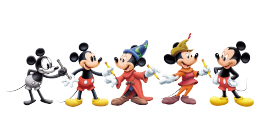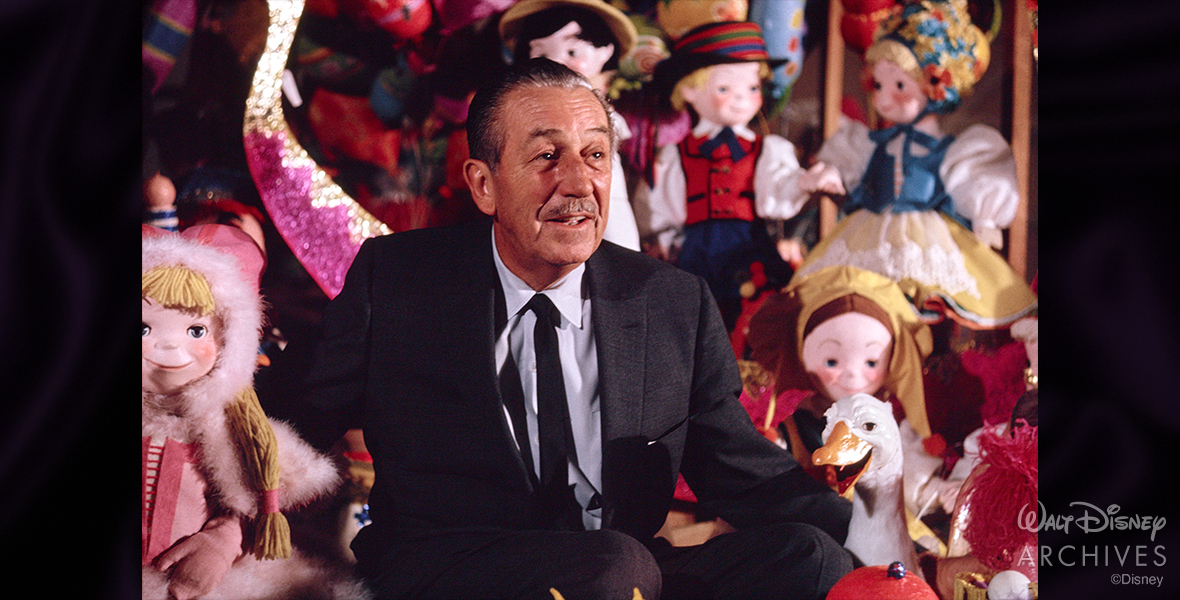By Taylor Larsen, Walt Disney Archives
Imagine the year is 6965, and you’re about to open a time capsule buried since October 16, 1965. As a record of 20th-century living, it was lowered deep within the earth on the last days of the famed 1964–1965 New York World’s Fair, with instructions to remain sealed for 5,000 years. In fact, this would be the second such time capsule, the first having been firmly planted on September 23, 1938, in advance of the 1939–1940 New York World’s Fair. Both capsules are packed with documents, memorabilia, and other commonly used items of the day—all evidence of what life was like in America during each respective era.
Wouldn’t it be amazing to journey several thousand years into “Tomorrowland” to glimpse these objects and discover how well they survived? Even now, on the 60th anniversary of the 1964–1965 New York World’s Fair, life has changed in profound ways… and a look inside a 60-year-old time capsule would still be a fascinating discovery. Just ask Father and his trusty dog Rover over at Walt Disney’s Carousel of Progress in Walt Disney World Resort; they’ll agree that life today looks much different than it did in the ’60s. One must possess the never-aging capabilities of the “Carousel family” (and witness every significant advancement in human life from now until 6965!) to be fortunate enough to see the memorabilia inside these capsules. Otherwise, you’re out of luck.
Rest assured, the Walt Disney Archives has you covered!

Because Walt Disney and his Imagineers played a critical role in the 1964–1965 New York World’s Fair (and since the Fair has been a significant part of the Disney story ever since), the Walt Disney Archives maintains its own collection of memorabilia and rarely-seen materials from this landmark event. We liken this to a living time capsule—one in which dedicated professionals actively preserve and protect the assets inside.
In 1964, the World’s Fair was mounted at Flushing Meadows Corona Park in Queens, New York, and promoted the theme of “Peace Through Understanding.” After some involvement in the 1939–1940 New York World’s Fair, Walt and his skilled designers, artisans, and craftsmen showcased their creativity and workmanship at an unprecedented level, leaving a lasting impact and drawing critical acclaim. If you’ve ever visited a Disney theme park, you’ve most likely seen evidence of Disney’s involvement in the Fair. Some items are massive show pieces or actual ride-through attractions at the parks, while other items are smaller, safely preserved objects that reside in the Archives and made available to the public through exhibitions… or right here!
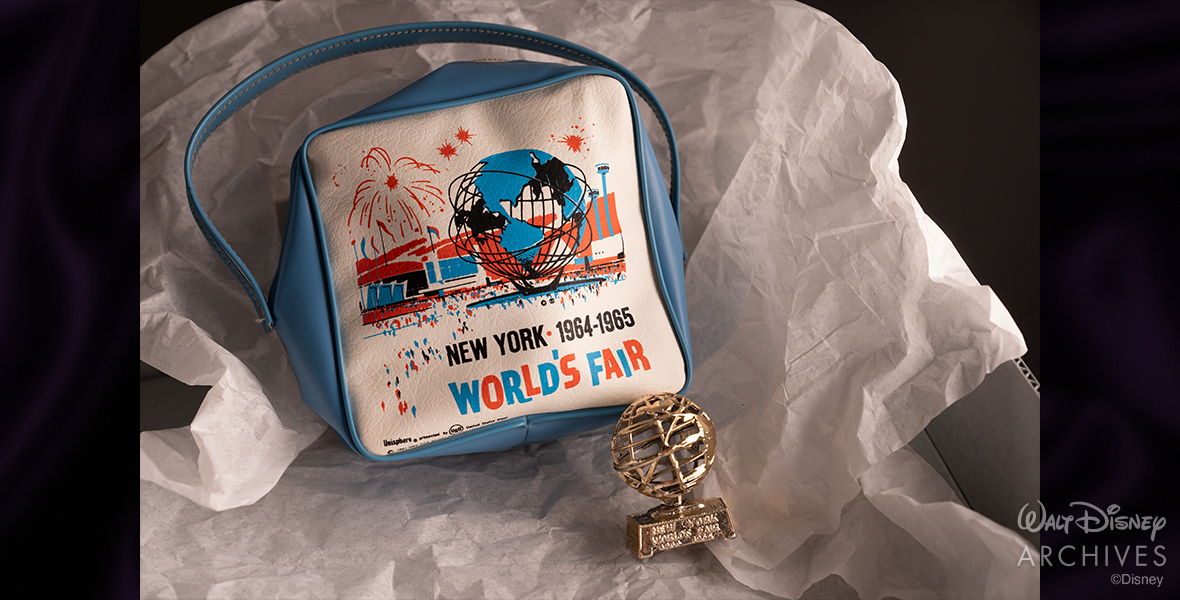
To celebrate the 60th anniversary of the New York World’s Fair, and many of the well-known Disney theme park attractions still enjoyed today, let’s take an up-close look at some rarely seen objects from 1964 and 1965. These items provide a unique perspective into Walt Disney’s involvement at the Fair.
Great Moments with Mr. Lincoln
When Robert Moses, president of the 1964–1965 New York World’s Fair, visited the Disney studio in 1963 he was able to witness an early test of the first Audio-Animatronics® human figure: Abraham Lincoln. He was so smitten with the illusion that he reportedly exclaimed, “I won’t open the Fair without that exhibit!” Moses was a fan of Walt Disney and, therefore, negotiated with the State of Illinois to sponsor and welcome the sixteenth president of the United States (in lifelike Audio-Animatronics form) to their pavilion.
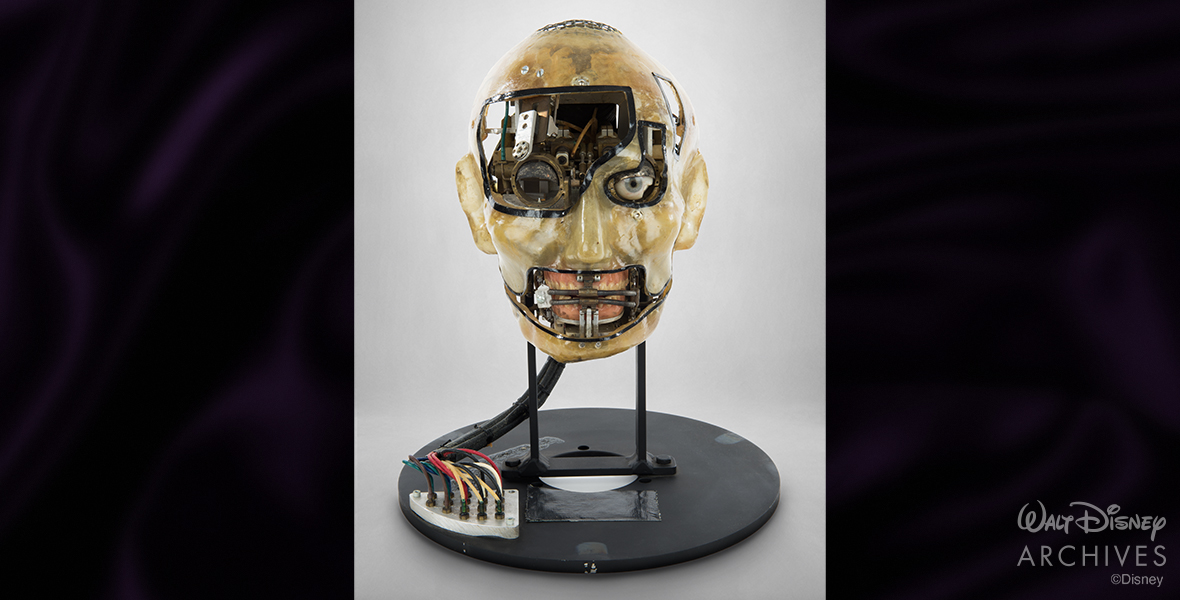
At the time, the Lincoln figure was arguably Walt’s most sophisticated creation, and there were myriad technical issues leading up to the Fair’s opening day. Walt, however, remained confident the figure would perform successfully. On May 2, 1964, Great Moments with Mr. Lincoln officially debuted at the State of Illinois pavilion and became one of the most popular attractions at the Fair. (The figure was so lifelike that some attendees incorrectly recounted how the president walked forward and shook hands with the crowd.) With advancements in technology, an updated Audio-Animatronics Lincoln still delights guests today at Disneyland Park. The Walt Disney Archives has several components of that first Lincoln figure built for New York, including the head feature. This historical object is currently traveling with the Disney100: The Exhibition and will soon be displayed at its next stop in Kansas City, Missouri.
Progressland, featuring the Carousel of Progress
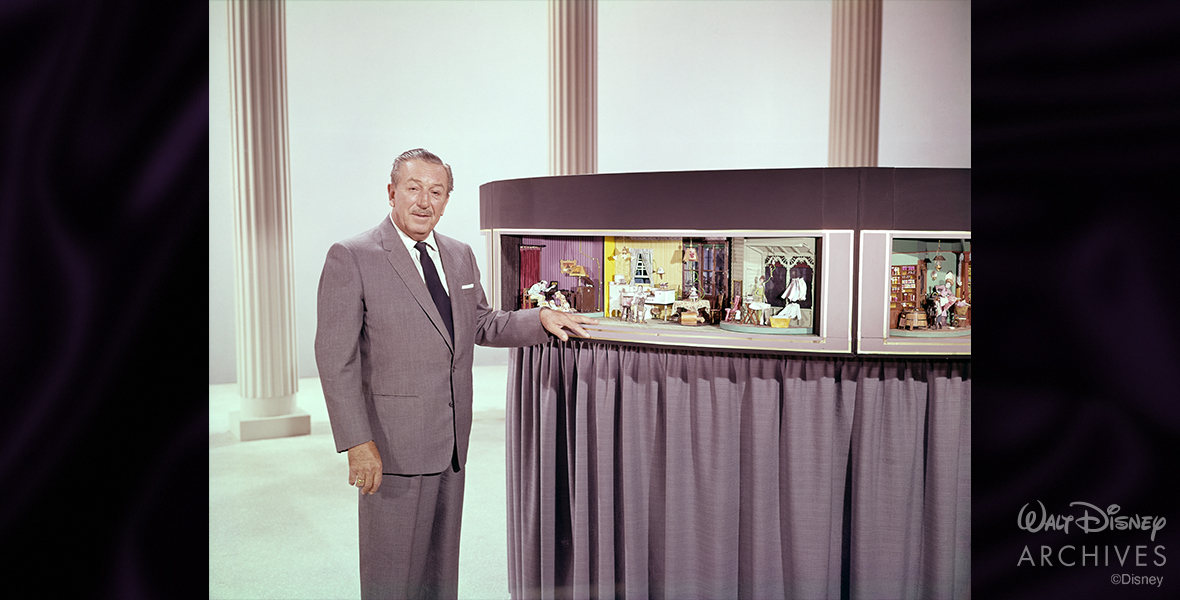
Remember Father and his dog, Rover? Like Mr. Lincoln, they also caught their big break in Queens. Leading up to the events in New York, Walt secured the sponsorship of General Electric to build a first-of-its-kind stage production featuring an impressive cast of Audio-Animatronics performers. The Carousel of Progress opened with the Progressland pavilion on the Fair’s opening day—April 22, 1964—and presented an entertaining narrative about electrical progress in America from the turn of the 20th century to the near future, as told by a “typical” American family of the time. An innovative ride system allowed the audience to move scene by scene around a central stage in a unique “theater in the round.”
The successful attraction was among the highest attended at the Fair, and General Electric agreed to sponsor the show when it moved to Disneyland in 1967. It relocated to Walt Disney World Resort in 1975, and General Electric continued its sponsorship until 1985. Today, the attraction is known as Walt Disney’s Carousel of Progress, a tribute to Walt’s love of both nostalgia and the promise of tomorrow. Next time you visit the Magic Kingdom, take a spin through the decades with the Carousel family. They’ve been delighting guests for 60 years!
Magic Skyway
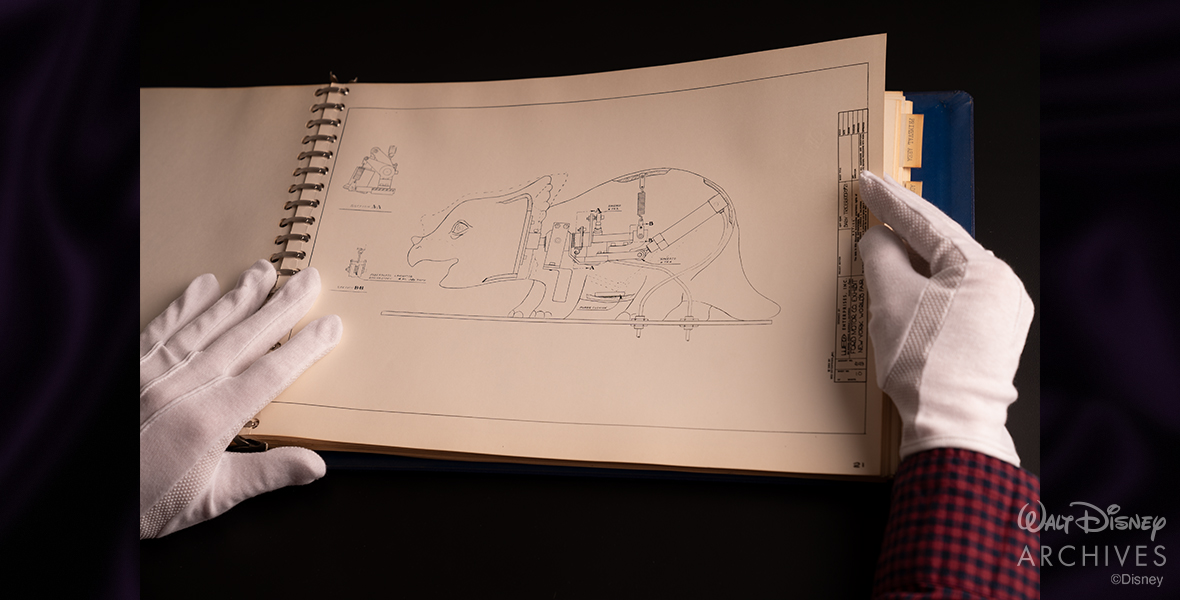
Ford Motor Company was one of the most prominent exhibitors at the Fair, and the company responded to Walt’s proposal for an attraction allowing visitors to journey through time in actual Ford cars. The popular attraction, titled the Magic Skyway, first took visitors to prehistoric times, including a climactic battle between two roaring dinosaurs. These dueling giants, and several other Audio-Animatronics beasts, did not go extinct—but have lived on inside the Primeval World Diorama of the Disneyland Railroad in Anaheim since July 1, 1966.
“it’s a small world”
With three shows in development, Walt Disney’s unique brand of entertainment was already well represented among the Fair’s planned 650 acres of experiences and displays. But a late addition to the creative lineup, which beautifully exemplified the Fair’s theme of “Peace Through Understanding,” would become one of the most charming attractions in Disney history (and thrill more than 10 million children of all ages during its premiere in New York). If you ever had the pleasure of sailing on “The Happiest Cruise That Ever Sailed ’Round the World,” you know the attraction well: “it’s a small world.”
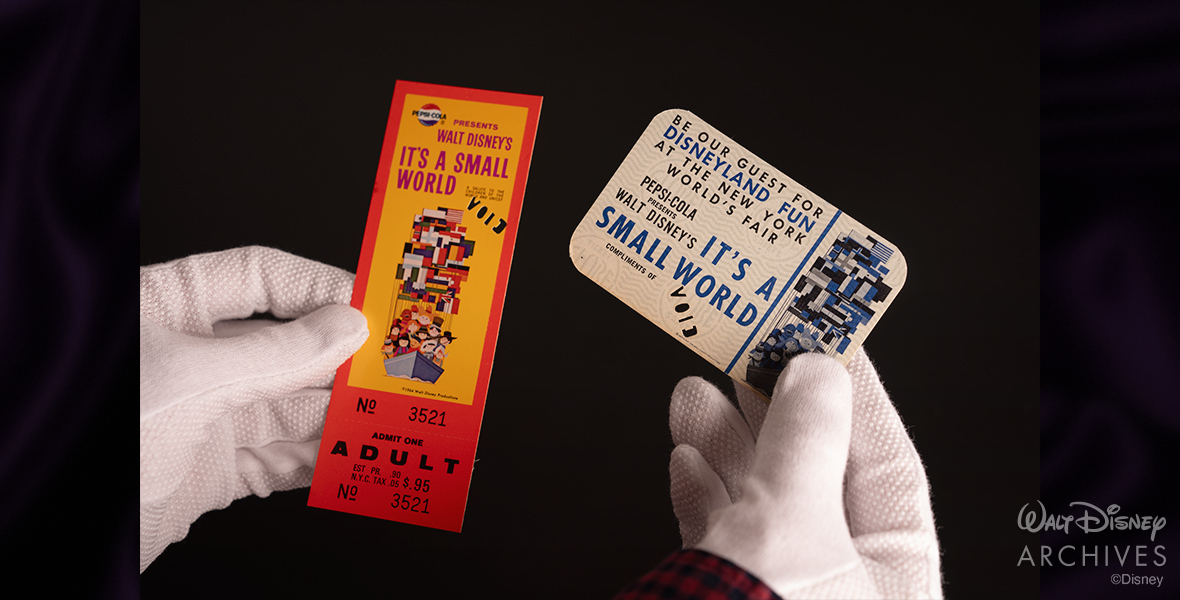
The Walt Disney Archives preserves an impressive array of objects from the New York World’s Fair, including memorabilia and admission media. These colorful tickets offer a glimpse into what it would have been like to attend the Fair and take a journey on the happiest cruise of them all.
It all began in 1963, when the Pepsi-Cola Company approached Walt Disney about creating a salute to children and an exhibit to benefit the United Nations Children’s Fund (UNICEF). With the three other projects already underway, the year leading up to the Fair was full of creative challenges for Disney that required a symphony of people with many diverse skills. The artistic talents of countless dedicated individuals made “it’s a small world” an international kaleidoscope and an entertaining reality. After two successful seasons in New York, “it’s a small world” relocated to Disneyland and opened May 28, 1966, to great fanfare.

The words sung by the international dolls of “it’s a small world” are still heard by millions of guests from all walks of life. This delightful musical fantasy continues to stand as a tribute to the early version in New York. And with additional versions inspiring passengers at Walt Disney World, Tokyo Disneyland, Disneyland Paris, and Hong Kong Disneyland, the sun never sets on “it’s a small world.”
Fortunately, we won’t need to live until 6965 to catch a glimpse at fascinating objects that date to the 1960s. Disney parks and the Walt Disney Archives serve as a type of time capsule that can remind us of the incredible talents and dedicated professionals who came before us. The Archives continues to be dedicated to preserving objects that, when viewed, can transport us 60 years back to the 1964-1965 New York World’s Fair. Thanks for following along!


